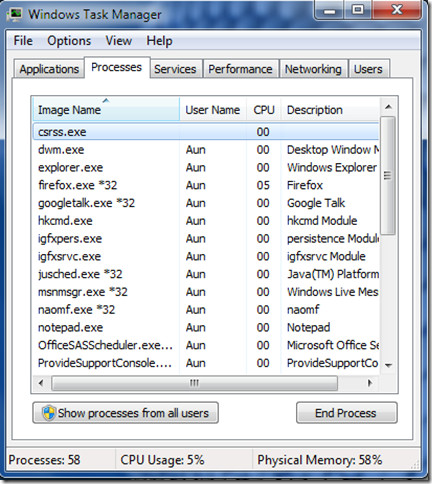
- TASK MANAGER SHORTCUT WITH MINIMIZE ON USE HOW TO
- TASK MANAGER SHORTCUT WITH MINIMIZE ON USE FULL
- TASK MANAGER SHORTCUT WITH MINIMIZE ON USE SOFTWARE
- TASK MANAGER SHORTCUT WITH MINIMIZE ON USE PC
SHIFT when you insert a CD-ROM into the CD-ROM drive (Prevent the CD-ROM from automatically playing)Ĭan't get enough of these keyboard shortcuts? Go to for more. 3 steps to open Chrome built-in task manager to view and control Chrome running processes.
TASK MANAGER SHORTCUT WITH MINIMIZE ON USE HOW TO
SHIFT with any of the arrow keys (Select more than one item in a window or on the desktop, or select text in a document)ĪLT+F4 (Close the active item, or quit the active program)ĬTRL+ F4 (Close the active document in programs that enable you to have multiple documents open simultaneously)ĪLT+TAB (Switch between the open items on the toolbar)į5 key (Update or refresh the active window)īACKSPACE (View the folder one level up in My Computer or Windows Explorer) This guide shows you how to open and use Google Chrome task manager. Ctrl + Arrow keys Change Start menu size. Windows Logo+F (Search for a file or a folder)ĬTRL+SHIFT while dragging an item (Create a shortcut to the selected item)ĬTRL+ SHIFT with any of the arrow keys (Highlight a block of text) Keyboard shortcut Action Windows key (or Ctrl + Esc) Open Start menu. Windows Logo+SHIFT+M (Restore the minimized windows) Windows Logo+M (Minimize all of the windows) Windows Logo+BREAK (Display the System Properties dialog box) Windows Logo (Display or hide the Start menu) Here are a few commonly used Windows keyboard shortcuts:
TASK MANAGER SHORTCUT WITH MINIMIZE ON USE FULL
Over the course of a full day, you could save several minutes by using keyboard shortcuts instead of the mouse. To open the Run window, press Windows+R, then type 'taskmgr', and then click 'OK' or hit Enter. To open the Run window, press Windows+R, then type 'taskmgr', and then click 'OK' or hit Enter. A task manager is a system monitor tool that provides information about the processes and programs operating on a computer, as well as the machine's overall state. On the Create new task dialog, type: control in the Open box.
TASK MANAGER SHORTCUT WITH MINIMIZE ON USE PC
If you are a good typist, taking your hands away from the keyboard to move the mouse can use up a few seconds. A task manager is a system monitor tool that provides information about the processes and programs operating on a computer, as well as the machines overall state. If the Task Manager opens in compact mode, as shown below, click More details to expand it. How to Use Task manager in Windows 7 on your Dell PC This article is a guide using the Task Manager utility in the Windows 7 operating system on your Dell PC. Depending on the type of work you're doing however, sometimes using a mouse actually slows you down. Now that you have a shortcut, right-click and choose Properties. If you are using XP or this doesn’t work, you can also use the full path to task manager: C:\Windows\System32\taskmgr.exe. In the location box, just type taskmgr and hit next. You can deactivate these directly from within the Task Manager or uninstall them from your computer.The mouse, one of the greatest advances in computing history, provides you with an intuitive point-and-click method for using your computer. Right-click on the desktop and choose New \ Shortcut. This information allows you to spot a program running at high capacity that you do not even need or use.

To maximize the current app, use the Windows + Up arrow keyboard shortcut. If the app is maximized, this minimize shortcut only restores it to its intermediate state, so you have to use it twice to hide the window from view.

The practical tool provides detailed information on individual processes. To minimize the app you are using, press Windows + Down arrow on your keyboard. 3. When you discover an unnecessary process, you also have the option of ending this directly from the Task Manager. The Windows Task Manager gets rid of this uncertainty by offering an overview of all applications running in the background. Though it’s true that these applications are clearly visible via their distinct symbol on the taskbar, their exact influence on PC performance cannot be discerned at first glance.
TASK MANAGER SHORTCUT WITH MINIMIZE ON USE SOFTWARE
Typically, a browser with several tabs, a text editor with an open document, an email client, a graphics program, and software for playing background music may all run at the same time. When a user launches and uses one or several programs, these user-controlled processes join a whole host of default processes that are already running in the background.


 0 kommentar(er)
0 kommentar(er)
